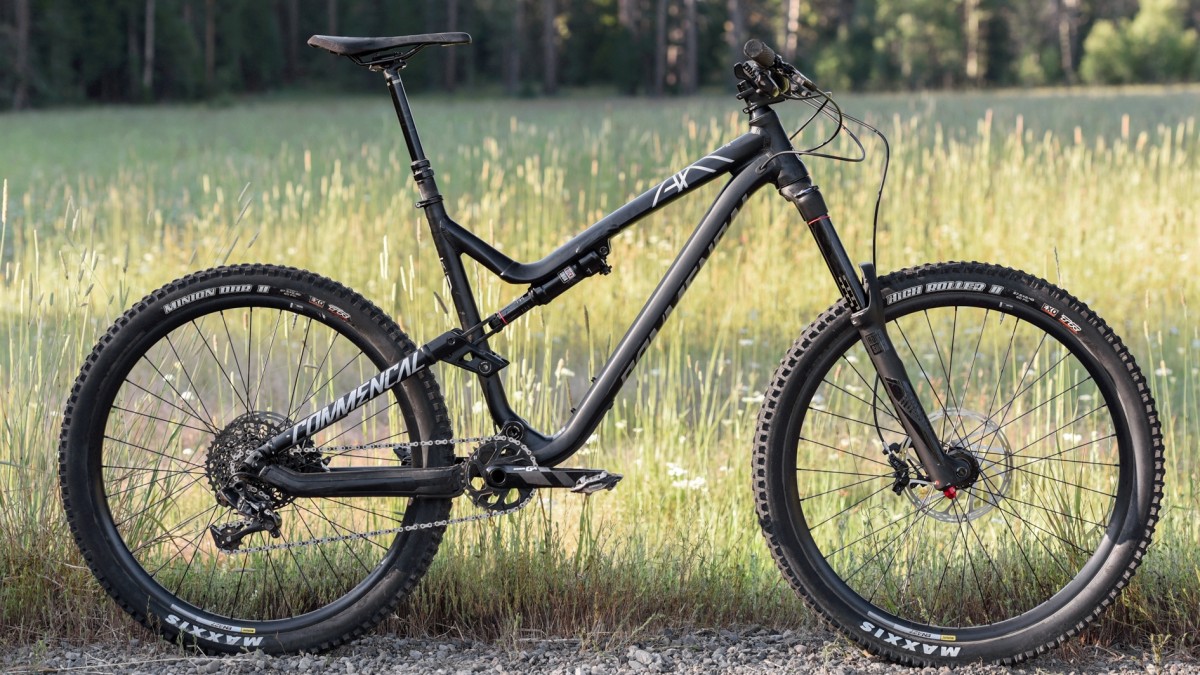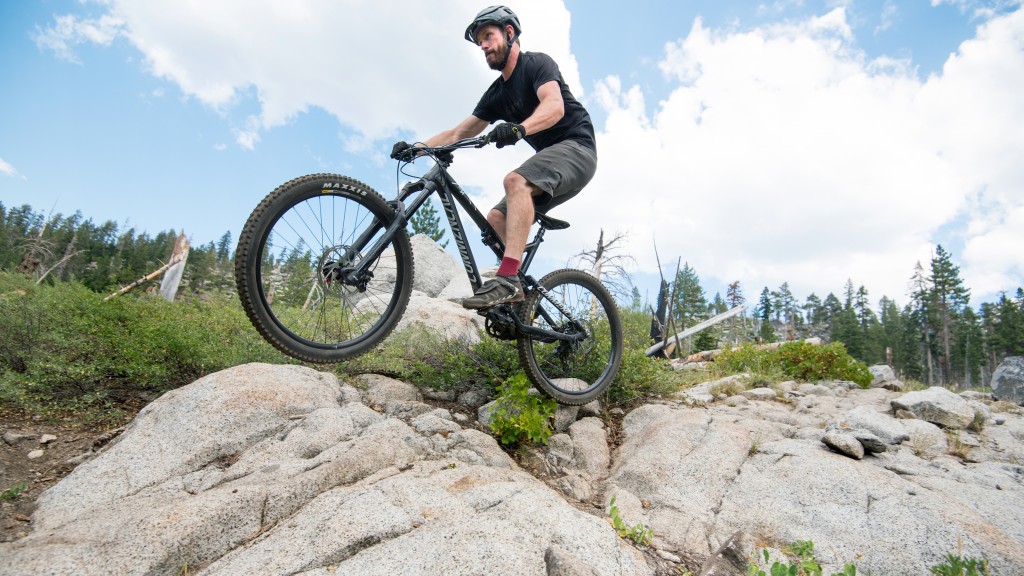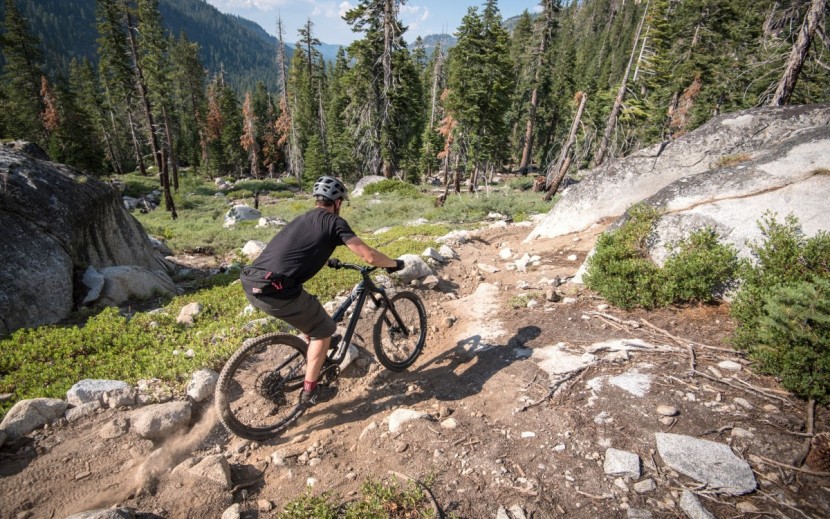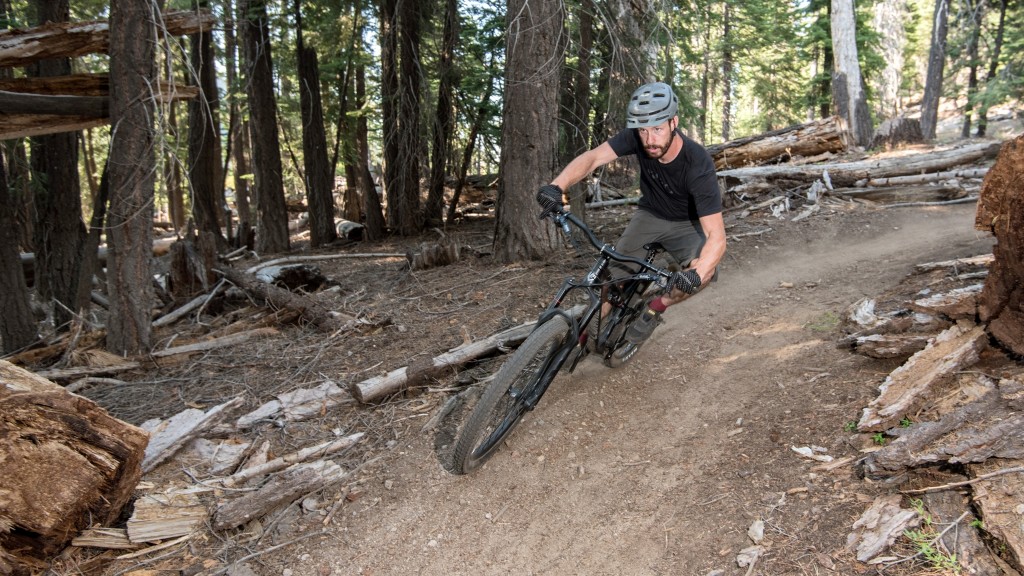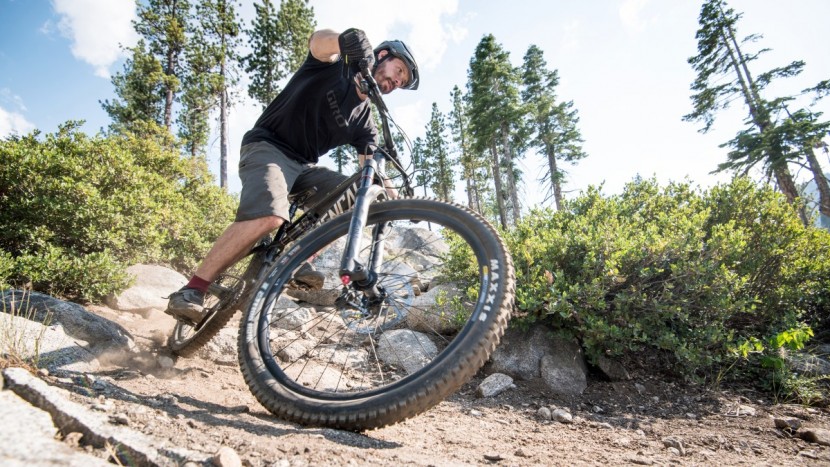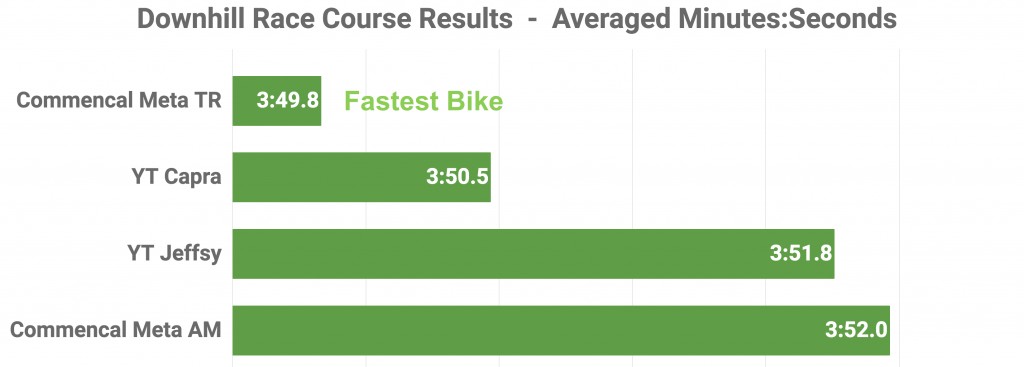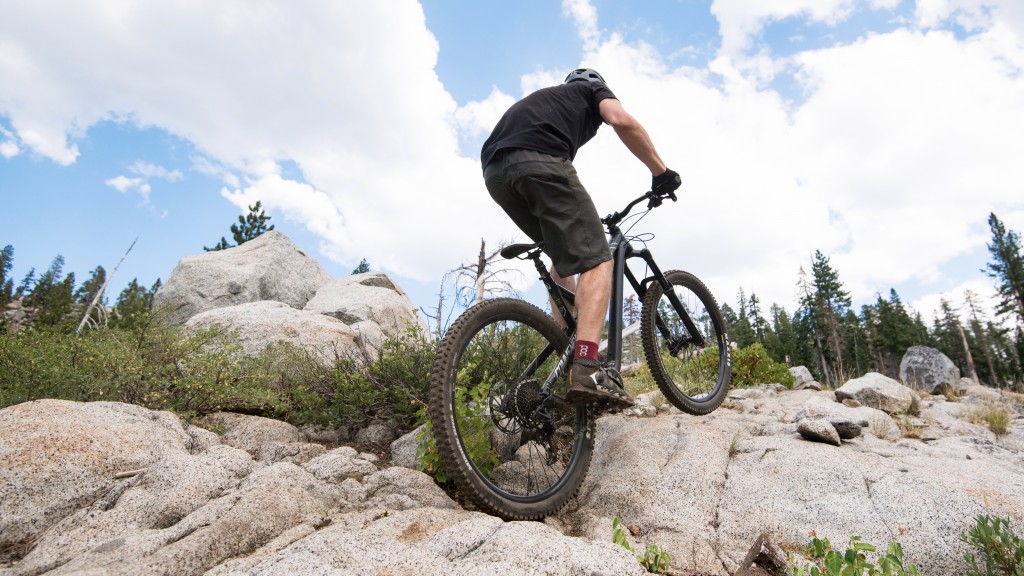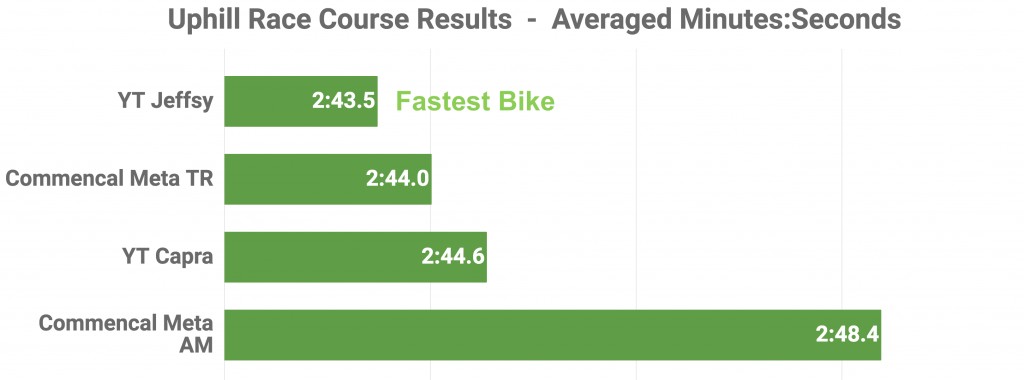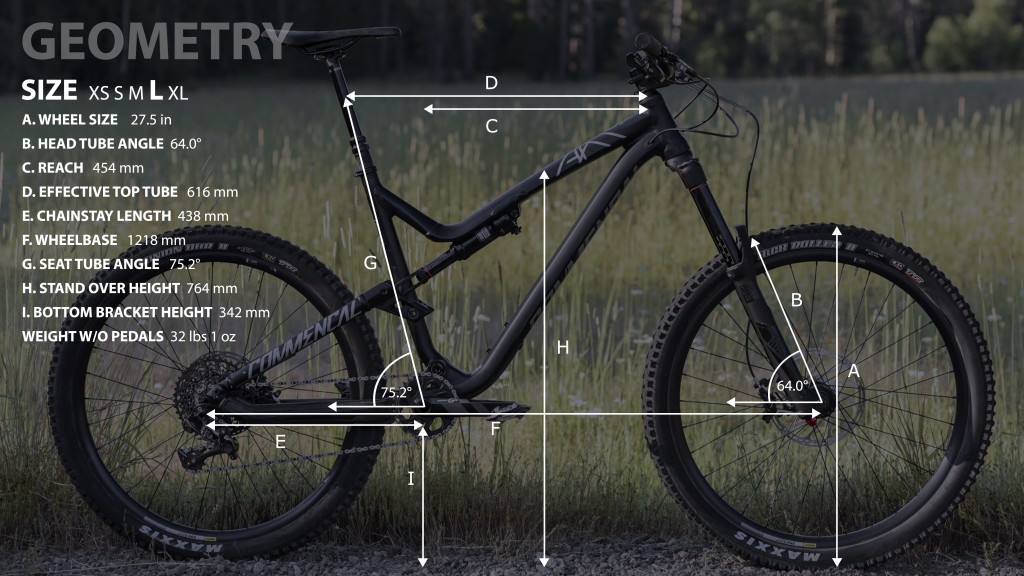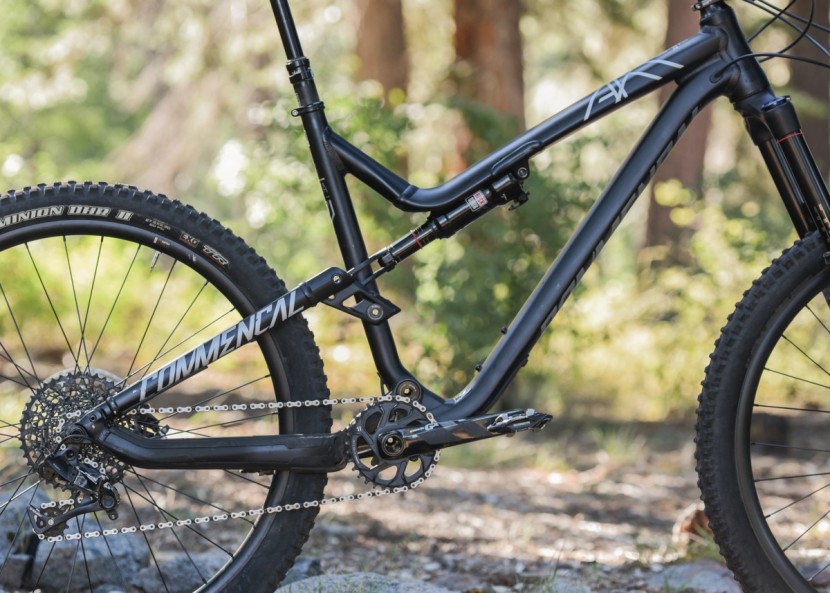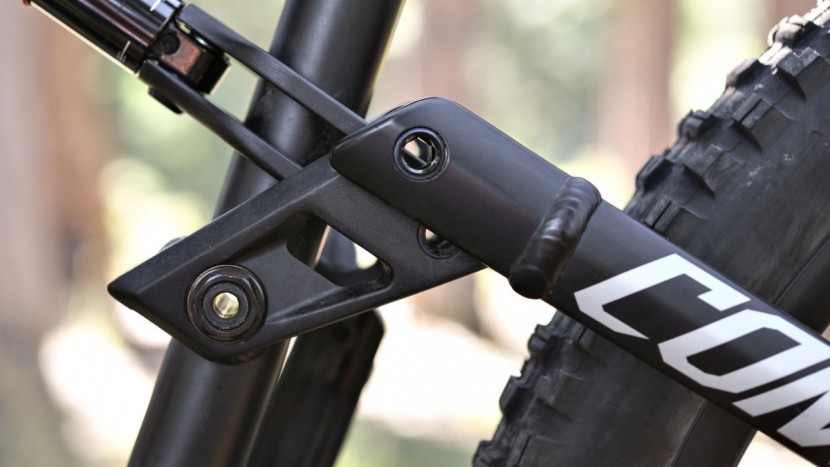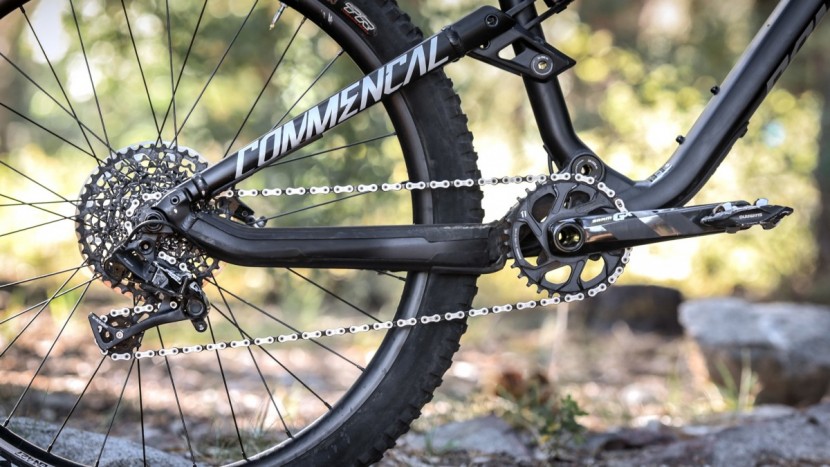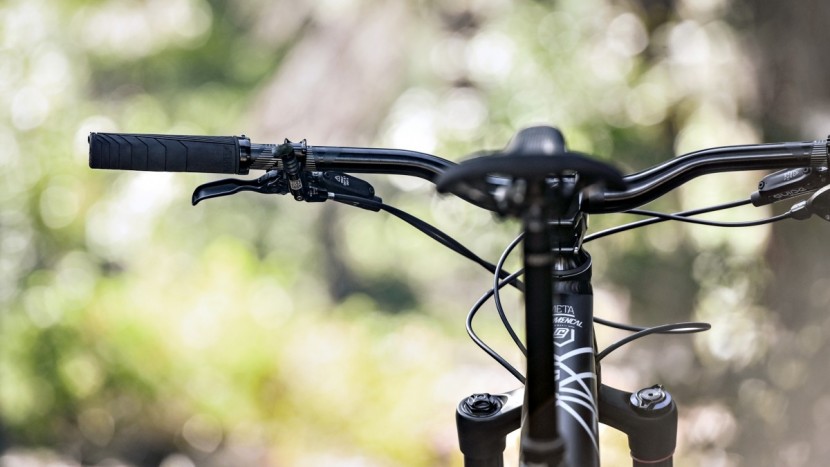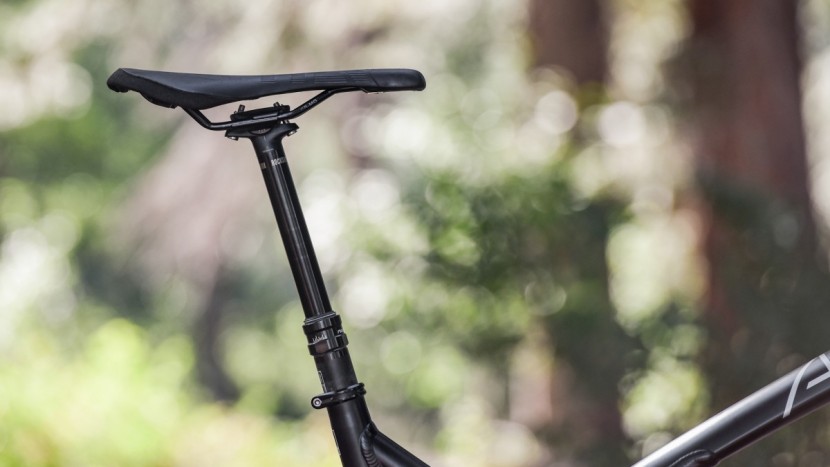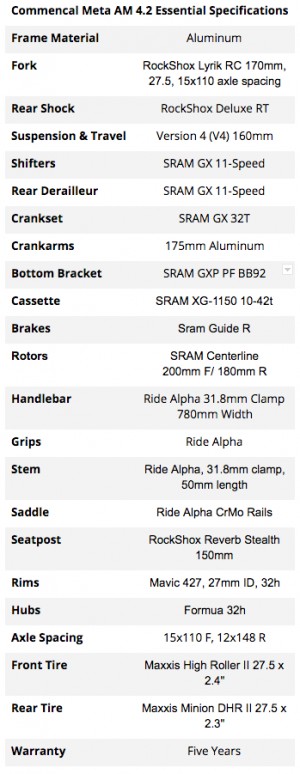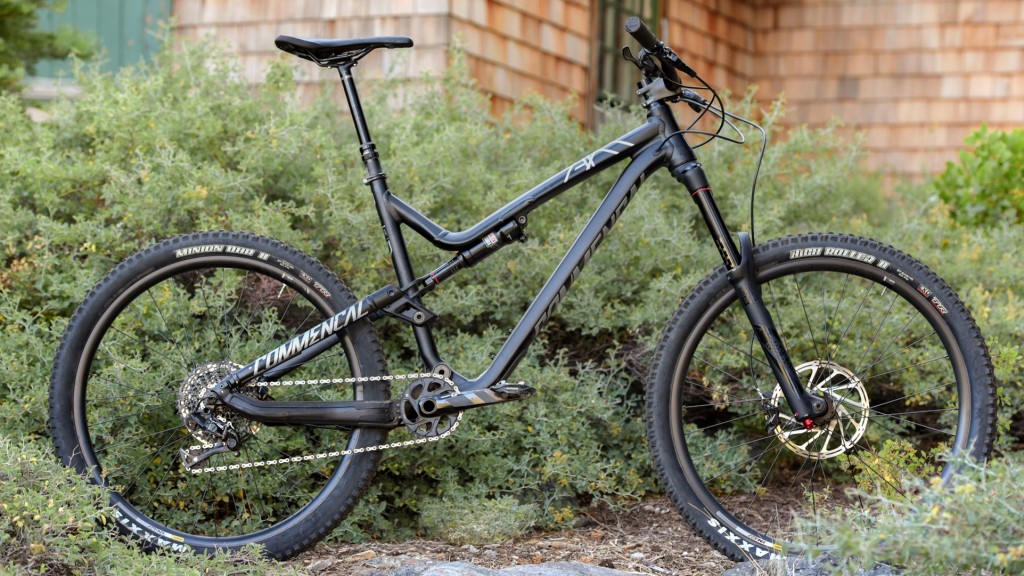Commencal Meta AM 4.2 Essential Review
Our Verdict
Our Analysis and Test Results
2017 Analysis and Test Results
Five professional mountain bike testers spent ten weeks piloting four consumer-direct up and down Sierra singletrack. The Commencal Meta AM V4.2 Essential faced off against the 2017 YT Capra, 2017 YT Jeffsy, and playful 2017 Commencal Meta TR V4.2 Essential. We ranked these bikes by fun factor, climbing abilities, descending abilities and build specifications. The Commencal Meta AM scored a 65 out of 100 to finish second in our test, despite coming in last in our time trials. Our downhill course admittedly favored trail bikes over enduro rigs, with multiple pedaling sections giving the advantage to more efficient, less downhill focused bikes.
Fun Factor
When hauling boogie down steep and craggy singletrack the Meta AM is a blast. The bike's high plow-factor ensures that rough trails are a rock and rolling good time. Everywhere else, the Meta AM is less joyful. Flat sections are tedious. On steep, challenging uphills, the bike is more grimace than grin.
Both the joy and pain we experience aboard the bike can be traced to its slack 64-degree head tube angle and long 1,218mm wheelbase. Such a long running length keeps the bike calm and grounded through chunder at high speeds. A plush rear suspension and 170mm RockShox Lyrik absorb the rock bashing and offer a smooth and pleasant ride. That burly fork will gloss over a lot of bad line choices or front-wheel-first landings.
The same hefty, planted feeling that makes the Meta AM so confident keeps it from getting too playful. Manuals and boosts are not really encouraged aboard this beast. It wants to hammer through park laps, hard. Last time we checked, that's a lot of fun. A stout 32 to 42-tooth gear ratio can be painful on the climbs but lets you keep cranking on those maching downhill runs. Long faced jump lines lop this bike into the air easily enough. The flight feels balanced and comfortable. The bike slingshots around big berms just fin but the 2.3-inch Maxxis High Roller II up front can wash on flat turns. The resulting drift can be thrilling, but we prefer traction.
All this is to say, the bike is fun where it's meant to be, heading downhill. This isn't your best bet for logging miles or huge elevation gains and can feel pretty lifeless on mellow flow lines. Riders seeking superb rowdy downhill capabilities on a bike that they can methodically and calmly climb will have boatloads of fun on the Meta AM.
The Meta AM V4.2 scored a 7 out of 10 in fun for its redlining downhill performance. After all, going fast is fun. The scaled-down Commencal Meta TR won this category with a 9 out of 10 for its playful manners. The YT Jeffsy and Capra rolled into a third-place tie with a 5 out of 10.
Downhill Performance
A quick glance at the travel numbers on the Commencal Meta AM and it is quite obvious, this bike is designed to shine on the descent. This long-travel aluminum monster did not disappoint. This bike feels better the faster it is driven and is not deterred by steep chutes or rough terrain. The component grouping lends itself to confident descending although a burlier rear shock would take the Meta AM to a new level.
Downhill handling is solid aboard the long-legged Commencal. When piloted at speed, the bike gets more and more responsive. It settles into a comfort zone and responds more easily to rider input and body language. When carrying less speed, the Meta AM has an unmistakable hefty and sluggish feel. Navigating through slow downhill corners can certainly take some muscle to fight the clunky feel. The Maxxis High Roller II up front is not very confidence inspiring. When maneuvering a sharp downhill corner with some rock steps or chatter, the front wheel can be bounced off line. On buff and bermed corners, the High Roller II is serviceable. The Meta AM has Maxxis Minion DHR II mounted on the rear. We would suggest flip-flopping the rubber to enjoy a more confident front wheel.
As we've established this bike loves speed and gnar. The industry trend of running a fork with longer travel than the rear shock has some serious merit. This becomes particularly apparent when evaluating a bikes plow factor. The Meta AM has the ability to plow your way out of a poor line choice or emergency situation. Lean back and the burly 170mm RockShox Lyrik can lay waste to any object in its path. This can be a useful trait hours into a ride when your mental stamina is drained.
The rear suspension's pedal platform found on the Meta AM is not wonderful under heavy standing load. This is particularly important if you feel like entering an enduro race or are a Strava fiend. When standing up on the cranks you lose significant amounts of power to the rear suspension. This is a waste of energy and can be disheartening when chasing your pals down the trail. The suspension design reacts poorly to square edge hits. Not many designs perform well when smashed into a corner 90-degree angled rock, but our Commencal let us know. Throughout the bulk of the downhill riding the suspension and RockShox Deluxe RT shock performed nobly but this bike would benefit for the beefier Super Deluxe or Fox Float X.
The Meta AM was our slowest descender in our benchmarking time trails. Our test track leaned more towards the trail bike category and less enduro. On an enduro style track, it is our belief that the Meta AM would likely post a far better time. The Meta TR was our fastest descender followed by the YT Capra and YT Jeffsy. Our test track was approximately two minutes and 45 seconds long and all bikes were within 2.1 seconds of one another.
OutdoorGearLab scored the Meta AM V4.2 an 8 out of 10 for its downhill dominance. This puts the AM in a first-place tie with the Meta TR which has a far more finesse approach to descending. The YT Capra and Jeffsy tied for third place for their bland performance.
Climbing Performance
It is unlikely that a 160mm enduro bike will blow you out of the water with its climbing abilities. This is especially true of the AM 4.2. This aluminum big rig can get you to the top of the downhill, but it's going to make you work for it. A calm and relaxed climbing motion is beneficial as is the climb switch on the rear shock. Attempting to hurry the Meta AM up a hill is only going to cost you valuable energy and is disheartening. That said, with the obvious preference this bike has for descending, climbing skills are reasonable.
The climbing position aboard the Meta AM is relatively comfortable. The roomy and long feel of the top tube allows plenty of space to move around. Shifting your weight on steeper pitches is easy. As with many bikes of this travel category, there is a sensation of being behind the bottom bracket and cranks. Shimmying forward in the saddle helps counteract this feeling to a degree. Slack head tube angles have an enormous benefit on the descent, but they can cause problems when climbing. A more raked-out fork puts less rider weight on the front wheel when cranking uphill and can cause the front wheel to rise up or wander. The Commencal is guilty of this. As a result of less weight on the front wheel, there is plenty of weight on the rear and traction is rock solid on this black beast.
It is critical to use the climb switch on the Meta AM. In 2017, it is commonplace to hear riders talking about climbing with the shock wide open to maximize traction. We do not recommend trying this on this Commencal. You lose a significant amount of energy to the suspension in the wide open position, especially when trying to put the power down in a hurry. It is best to relax and enjoy the burn in a comfortable seated position in the mid-firm shock position. While you will certainly not smash your best time on your favorite climb, the Meta AM will get you to the top of the hill so long as you have some patience.
The presence of a 32:42 gear ratio makes it significantly harder to relax, especially on a 32 lb+ bike. This stiff gearing requires consistent power to keep rolling. Riders plan on using this bicycle for more than bike park or shuttle laps should consider a 30-tooth, or even 28-tooth chainring for more comfortable climbing. After all, more energy saved on the descent results in more energy to charge back down the hill
Uphill handling on the Meta AM certainly requires a fair bit of game planning and a little bit of brute force. The combination of heft and a long wheelbase is not wonderful for negotiating tight uphill switchbacks. Proper setup and entry into corners are extremely helpful to work this bike around. This is especially true when there are some technical features involved. In a straight line, punching up rock gardens is a reasonable endeavor. A nice head of steam goes a long way to help you blast up a rocky pitch, just beware of pedal strikes. Step-style rock gardens that require picking up the front wheel over an obstacle and pulling the rear behind you are tiring on long rides. This lengthy and hefty vessel requires some persuasion to behave well on climbs.
The Meta AM was our slowest climber in our timed uphill testing. The chart above shows how much faster the other three bikes were on average. The Jeffsy was the fastest bike followed by the Meta TR and Capra. Our test course was just shy of four minutes long and all bikes were within five seconds of one another.
The AM V4.2 scored a 4 out of 10 for its dull and clunky climbing abilities. We scored the Meta TR as the best climber with a 9 out of 10. The YT Jeffsy is our second favorite climber with a 7 out of 10 followed by the surprisingly impressive Capra which scored a 6 out of 10.
Frame Design and Suspension Overview
The Meta AM V4.2 is built around Commencal's V4 Suspension Platform. The V4 stands for the newest iteration of the Meta AM's suspension system with 160mm of travel. V3 was phased out in 2014. This burly, big-mountain bruiser has a large pivot located above and slightly forward of the bottom bracket. The pivot is driven by a rocker link that mounts to the seatstay. The shock is tucked neatly under an oversized aluminum top tube. This suspension design is touted as progressive, preventing harsh bottom outs. We found the V4 system to be great on the descent but its pedal platform was subpar and requires the use of the climb switch on the shock.
According to our measurements the AM V4.2 is constructed with a 64.0-degree head angle. This is definitely slack, and the ride characteristics reflect this. The head angle matched with 438mm chainstays and a 616mm effective top tube length create a lengthy 1218mm wheelbase. This slack front end and long base contribute heavily to the Meta AM's sluggish handling at slow speeds. The 75.2-degree effective seat tube angle, while not terribly slack, puts the rider behind the bottom bracket and doesn't lend itself to superb power transfer.
Build
The AM 4.2 Essential impressed us with its undeniable ability to ride very well within its intended application. Testers had very little to complain about in terms of the build specifications on this aluminum trail crusher. Components are well suited for the enduro or heavy all-mountain application. Add the impressive price tag into the equation and there is very little to complain about.
Fork and Shock — Commencal outfits the Meta AM 4.2 Essential with a 170mm RockShox Lyrik RC. This burly fork features 35mm stanchions, a stiff chassis, and the reliable Charger damper. The Lyrik is an impressive performance and is not easily deflected or bounced off line.
The RockShox Deluxe shock is a solid performer. The small bump compliance is less than stellar on this bike. It is difficult to differentiate between the shock and the suspension design when evaluating this issue. Downhill enthusiasts should consider a burlier reservoir/piggyback shock that is more adjustable.
Wheels and Tires — The Meta AM rolls on Mavic 427 rims with a 27mm inner diameter. The rims are laced to Formula hubs. The wheels are largely a non-issue although testers do note that there is a significant dead spot in the hub before the cassette engages. If you're smashing this bike down rocks on the reg, a burlier wheelset could only help.
The rims wore a 2.4-inch Maxxis High Roller II in the front and a 2.3-inch Maxxis Minion DHR II in the rear. The High Roller II is an odd choice for a front tire and is normally reserved for the rear. We experienced a washy front end with this setup. We would flip this setup around and run the DHR up front.
Groupset — The Essential build is powered by a SRAM GX1 rear derailleur. Shifting is reliable and crisp with no need for adjustment. Testers question how practical the stiff 32:42 gear ratio is when ascending. When paired with the heft of this bike, riders are working mighty hard to keep the Meta AM rolling.
SRAM Guide R brakes are rock solid and reliable. Testers appreciate the external reach adjust dial and the balance of power and modulation is excellent. Our heaviest testers had no complaints about brake fade.
Handlebars, Seat and Seatpost — The RockShox Reverb is still one of our favorite dropper posts on the market. When functioning properly, the Reverb has excellent lever feel and adjustable return speed.
The bars and stem are both manufactured by Ride Alpha, an in-house brand of Commencal. The 780mm bars provide nice stability without being obnoxiously wide.
The Commencal Meta AM 4.2 Essential scores a 7 out of 10 for its build kit. Don't let short bar in the chart above fool you, this is still a solidly spec'd bike.
2017 Build options
We tested the Essential version of the Meta AM which retails for $3,299. Commencal offers a plethora of build kits to suit your shredding needs. Fans of carbon fiber are out of luck as aluminum is the only material this company uses.
Looking for a jump up from our test model? The Race build kit features a more adjustable RockShox Lyrik RCT3 fork and the burlier Super Deluxe rear shock. Aside from the suspension, this is largely the same build kit as our test model aside from slightly upgraded SRAM Guide RS brakes. The Meta AM 4.2 Race retails for $3,899. Not worth it in our opinion.
Love this frame and want to go big? The top of the line World Cup build kit costs $5,199. It is largely the same as the Race version except for a SRAM X01 Eagle 1x12 drivetrain and a Spank Oozy 345 wheelset. It is sick. If you've got the cash, this will make climbing easier take descents to the next level.
We scored the Commencal Meta AM 4.2 a 7 out of 10 for its build specifications. The lack of a burly rear shock detracted from its score. This puts the Meta AM in fourth place. The Jeffsy and Capra won this category with a 9 out of 10. The Meta TR came in second place with an 8 out of 10.
Value
Commencal is a brand deep-rooted in the gravity mountain bike scene. The downhill prowess of the Commencal Meta AM 4.2 is impressive and the components are rock solid. The $3,299 price tag is a great value for a bike that blends great components with high performance within its intended applications.
Suggested Upgrades
It is clear that the Meta AM gets by with its downhill skills. A burlier shock such as the Fox Float X or RockShox Super Deluxe would both be excellent upgrades, especially for fans of the bike park. A less spendy endeavor would be swapping out the front tire for the aggressive and reliable Maxxis Minion DHF.
Conclusion
The Commencal Meta AM 4.2 can rip rough, high-speed downhills with supreme confidence while maintaining acceptable climbing abilities. Those seeking a very aggressive enduro bike who are okay with a slow and relaxed climb will love this bike. Riders who want a more even balance of climbing and descending skills should check out the downsized Commencal Meta TR 4.2. When ridden within its designed application, there are few bikes that can rival the balance of value and performance of the Meta AM 4.2.


